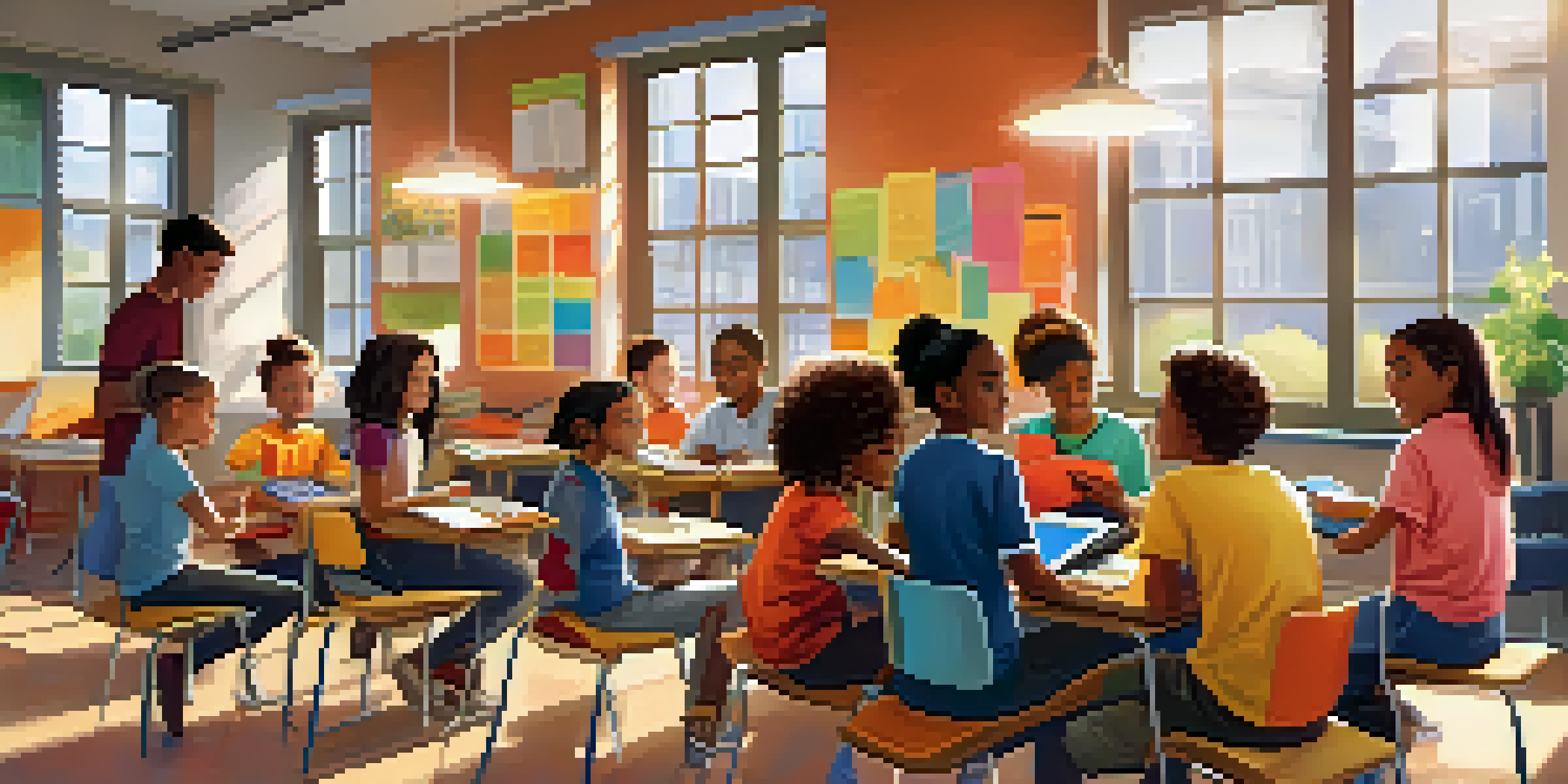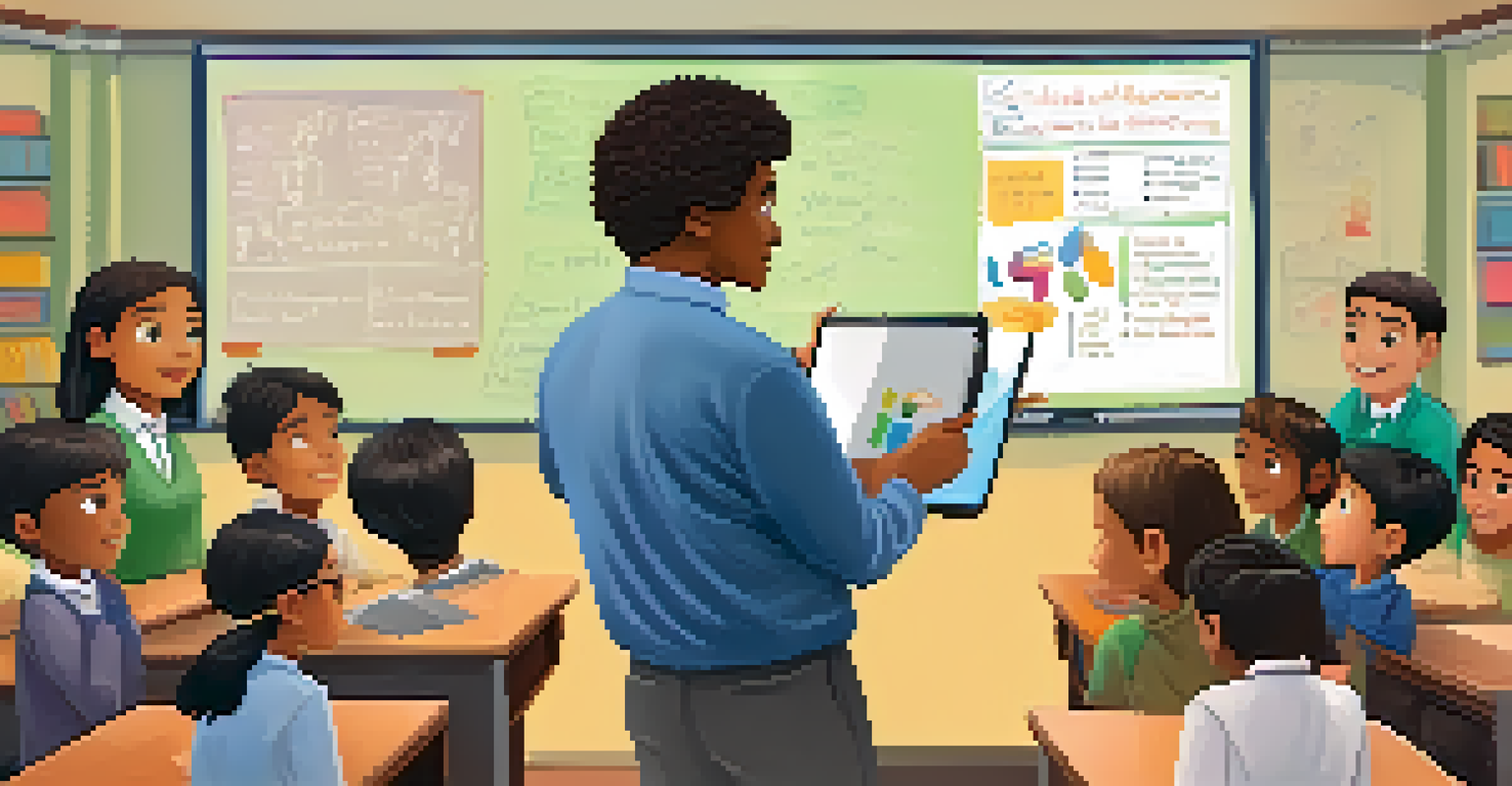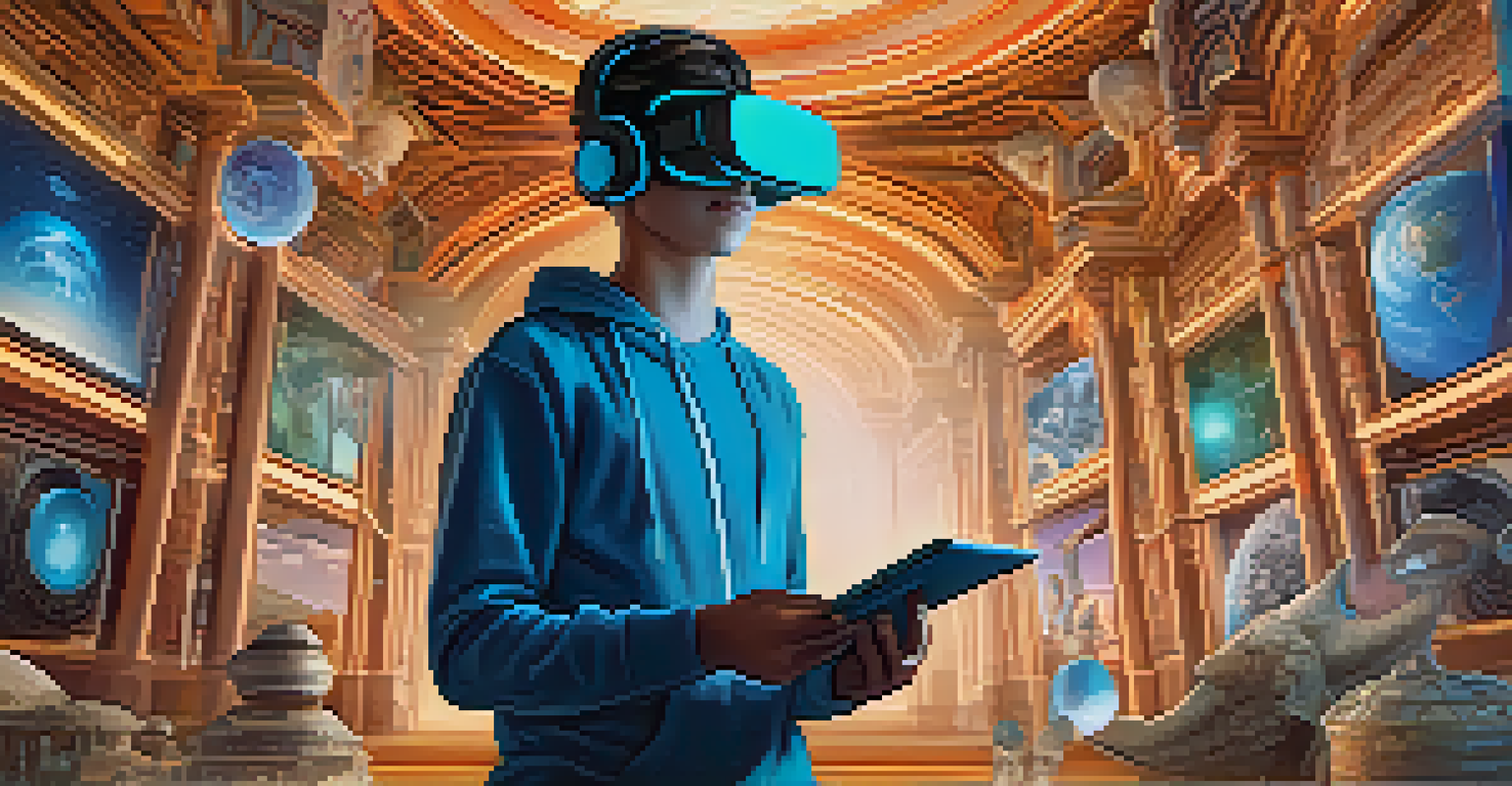How Tablets Are Changing Learning in NYC Classrooms

Tablets: Bridging the Digital Divide in Education
In a city as diverse as New York, access to technology can vary widely among students. Tablets are helping to bridge this digital divide by providing equal access to learning resources. With a tablet in hand, students from different backgrounds can explore a wealth of information, leveling the playing field in education.
Technology is best when it brings people together.
Schools in underprivileged neighborhoods are particularly benefiting from tablet initiatives. Programs that distribute tablets to students not only enhance learning but also empower teachers to introduce innovative teaching methods. This shift in access encourages collaboration and fosters a sense of community among students.
Moreover, as students engage with technology on a daily basis, they develop essential digital literacy skills. This is crucial for their future careers, as many industries now require a strong understanding of technology. By integrating tablets into the classroom, NYC is preparing its students for a tech-savvy world.
Interactive Learning: Enhancing Engagement with Tablets
One of the standout features of tablets is their ability to make learning interactive and engaging. Unlike traditional textbooks, tablets offer multimedia content that captures students' attention. For instance, interactive apps and educational games transform mundane lessons into exciting adventures.

Teachers are finding that when students can touch, swipe, and interact with content, their motivation skyrockets. This hands-on approach encourages active participation, allowing students to take charge of their learning. By incorporating gamified elements, educators can turn even the most challenging subjects into captivating experiences.
Equal Access to Learning Resources
Tablets bridge the digital divide, providing students from diverse backgrounds equal access to vital educational resources.
Additionally, the instant feedback provided by many educational apps helps students monitor their progress in real-time. This immediate response not only boosts confidence but also allows for personalized learning paths. Students can tackle concepts at their own pace, ensuring a deeper understanding of the material.
Collaboration and Communication: A New Era in Classrooms
Tablets are reshaping how students collaborate with one another and communicate with their teachers. With tools like shared documents and group chats, teamwork has never been easier. Students can work together on projects, regardless of where they are, fostering a sense of community and collaboration.
Education is the most powerful weapon which you can use to change the world.
For teachers, tablets provide a platform to communicate effectively with students and parents. By sharing assignments and updates digitally, everyone stays on the same page, creating a supportive learning environment. This enhanced communication enhances accountability and encourages students to take ownership of their education.
Moreover, collaboration tools enable teachers to differentiate instruction, catering to various learning styles. With the ability to group students based on their needs, teachers can provide targeted support. This personalized approach ensures that every student can thrive in the classroom.
Access to Resources: Expanding Knowledge Beyond Textbooks
Gone are the days when students relied solely on textbooks for information. Tablets open the door to a vast array of resources, including e-books, online courses, and educational videos. This diversity of content enriches the learning experience and encourages students to explore beyond the curriculum.
For example, a student studying history can watch documentaries or access primary sources from around the world. This level of engagement helps them form their own opinions and encourages critical thinking. With just a few taps, the world becomes their classroom, inspiring curiosity and a love for learning.
Interactive Learning Enhances Engagement
The multimedia capabilities of tablets transform traditional lessons into interactive experiences, boosting student motivation and participation.
Furthermore, access to online resources empowers students to pursue their interests independently. Whether diving into coding, art, or science, they can follow their passions without the limitations of traditional learning environments. This autonomy not only boosts motivation but also cultivates a lifelong love for education.
Teacher Empowerment: Tablets as Educational Tools
Tablets are not just beneficial for students; they also empower teachers to enhance their instructional methods. With a wealth of educational apps and tools at their fingertips, teachers can easily create engaging lesson plans. This flexibility allows for a more dynamic classroom environment where creativity flourishes.
Moreover, tablets facilitate professional development opportunities for educators. Online workshops and resources enable teachers to stay current with the latest teaching strategies and technologies. As they embrace new ideas, teachers can implement innovative practices that resonate with their students.
By leveraging technology, educators can gather data and insights into student performance. This information helps them identify areas where students may struggle and adjust their teaching accordingly. Ultimately, tablets serve as valuable tools that enhance both teaching and learning experiences.
Managing Distractions: Finding Balance in Tablet Usage
While tablets offer numerous benefits, managing distractions is a challenge that educators face. With games, social media, and other non-educational content just a click away, it’s essential to establish guidelines. Creating a structured environment ensures that students remain focused during lessons.
Teachers are implementing strategies to harness the power of tablets while minimizing distractions. For instance, designated learning apps can be used during specific lessons, keeping students engaged with the material. Clear expectations and boundaries help students understand the importance of staying on task.
Empowering Teachers with Technology
Tablets equip educators with innovative tools and resources, enhancing their teaching methods and fostering a more dynamic classroom environment.
Moreover, incorporating mindfulness practices into the classroom can aid in reducing distractions. Taking short breaks or practicing breathing exercises allows students to reset their focus. By fostering a balanced approach, educators can ensure that tablets serve as effective learning tools rather than sources of distraction.
The Future of Learning: Embracing Technology in Education
As we look ahead, it’s clear that tablets are just the beginning of a broader technological revolution in education. Schools are beginning to embrace artificial intelligence, virtual reality, and augmented reality to further enhance the learning experience. This opens up new possibilities for immersive and personalized education.
Imagine a history lesson where students can virtually walk through ancient civilizations or a science class that allows them to experiment in a simulated lab. These advancements not only make learning more engaging but also cater to diverse learning styles. The future of education is incredibly exciting, and technology will play a central role.

However, it is crucial to approach this transition thoughtfully. Educators, administrators, and parents must work together to ensure that technology enhances education without compromising the foundational skills students need. By striking a balance, NYC classrooms can lead the way into a bright and innovative future.